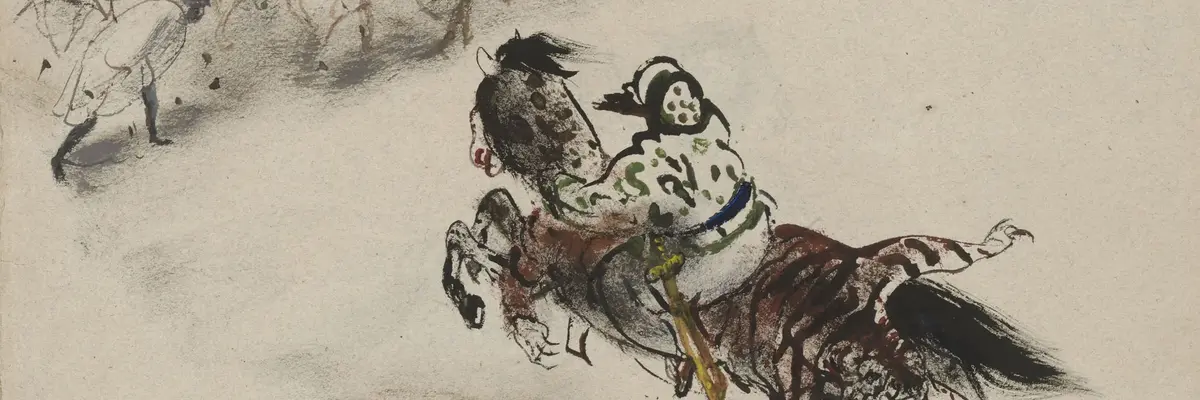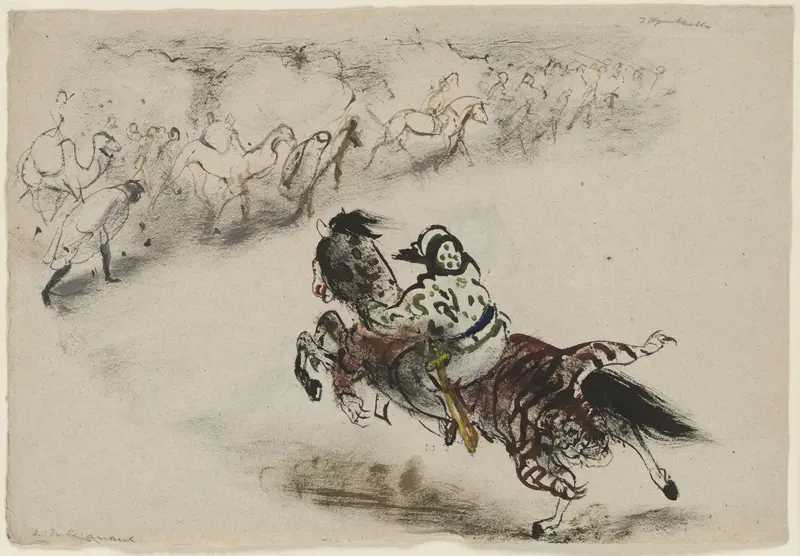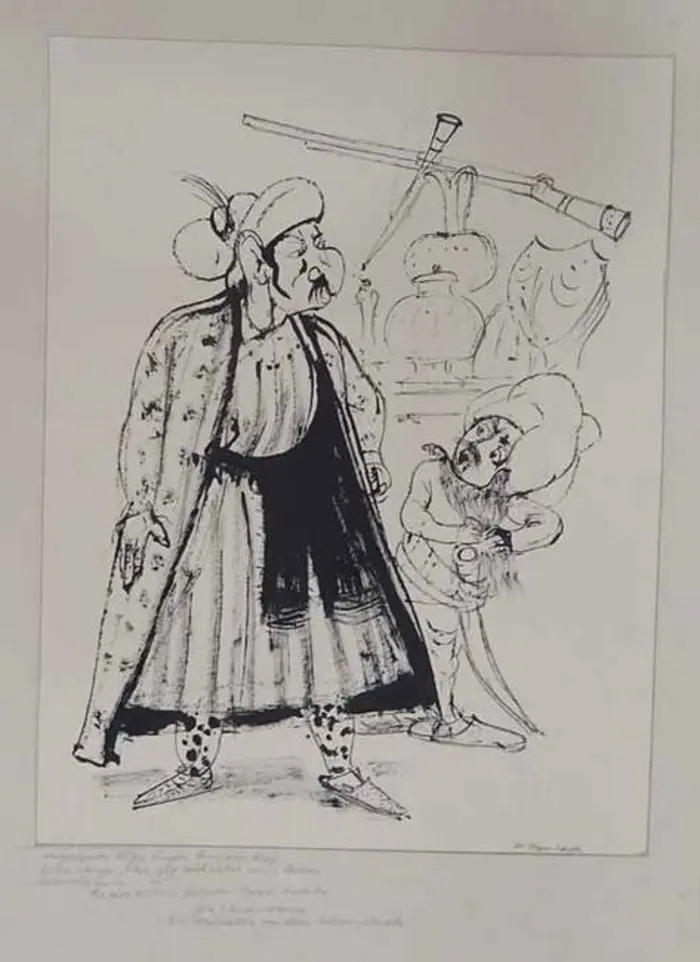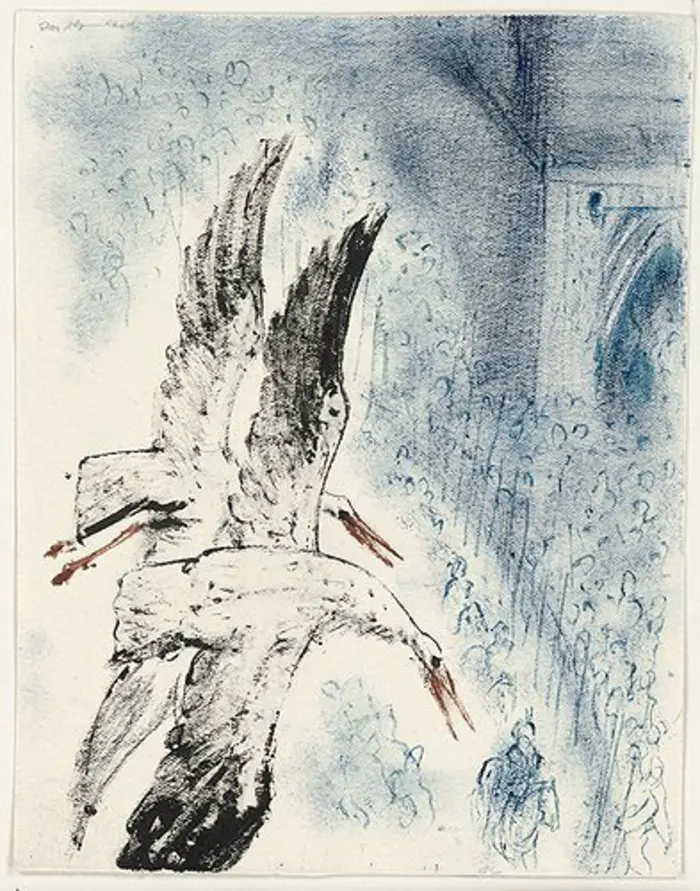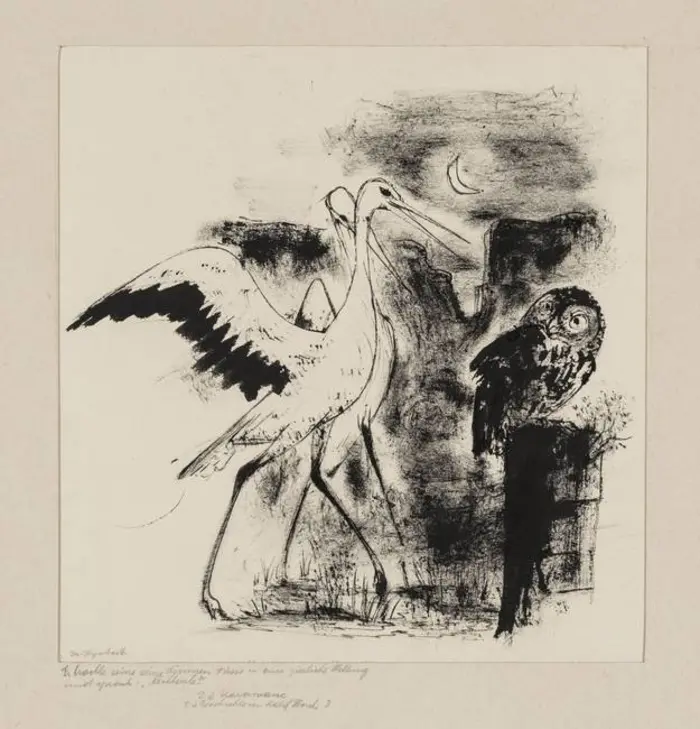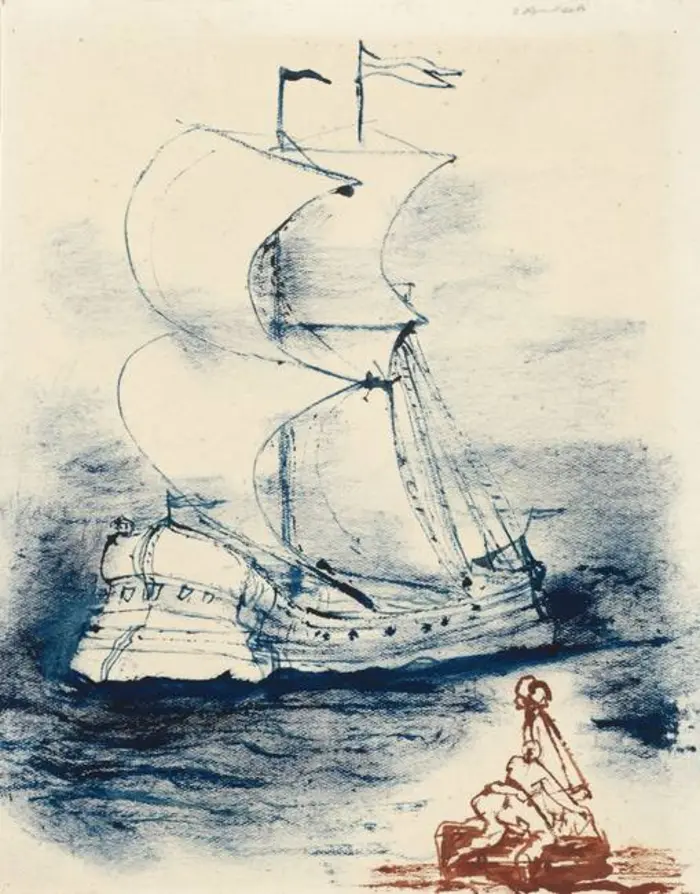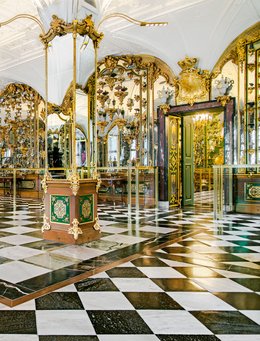Module Text
Josef Hegenbarth was also fascinated by Hauff’s Caravan. In the early 1940s the artist dealt intensively with the stories and decided to illustrate them. He explored the themes of the fairytales using two different techniques: One group of pen and two-tone brush drawings, which are now held in the Josef Hegenbarth Archive, served as the basis for the first illustrated edition of Hauff’s “Caravan”, published by Reclam-Verlag in Leipzig in 1966. The great popularity of this work, decorated with 16 full page brush drawings and 101 small-format pen drawings, is evident from the many editions and reprints of up to 17,000 copies which were not only published in both East and West Germany but were also made known in Japan by Hegenbarth himself.
Josef Hegenbarth’s second illustrated version, for which he used pen-and-ink drawings, was destined to undergo an adventurous journey. At the end of the Second World War this group of drawings for a book project that was never realised was located in Wriezen in Brandenburg, where it was seized by the Red Army and was taken via Berlin to the Soviet Union, ending up in St Petersburg. When works of art were returned to the GDR in 1958/59, the portfolio containing 43 drawings belonging to Hegenbarth was given to the Berlin Kupferstichkabinett.
After more than 70 years these illustrations have now permanently returned to their place of origin in Loschwitz and invite comparison with the published »Caravan« illustrations. Thus, the exhibition provides a fascinating insight into the work of provenance researchers.
